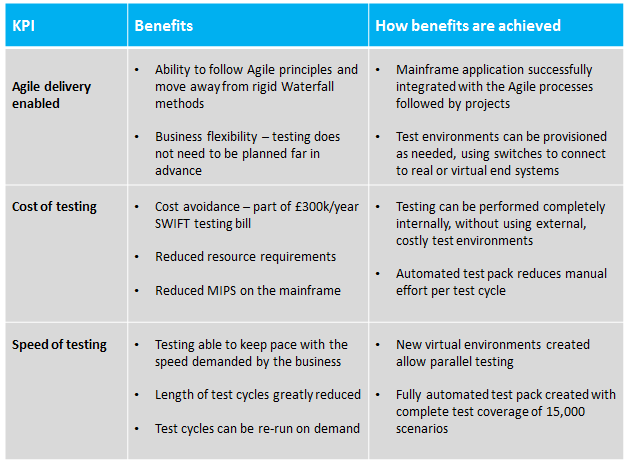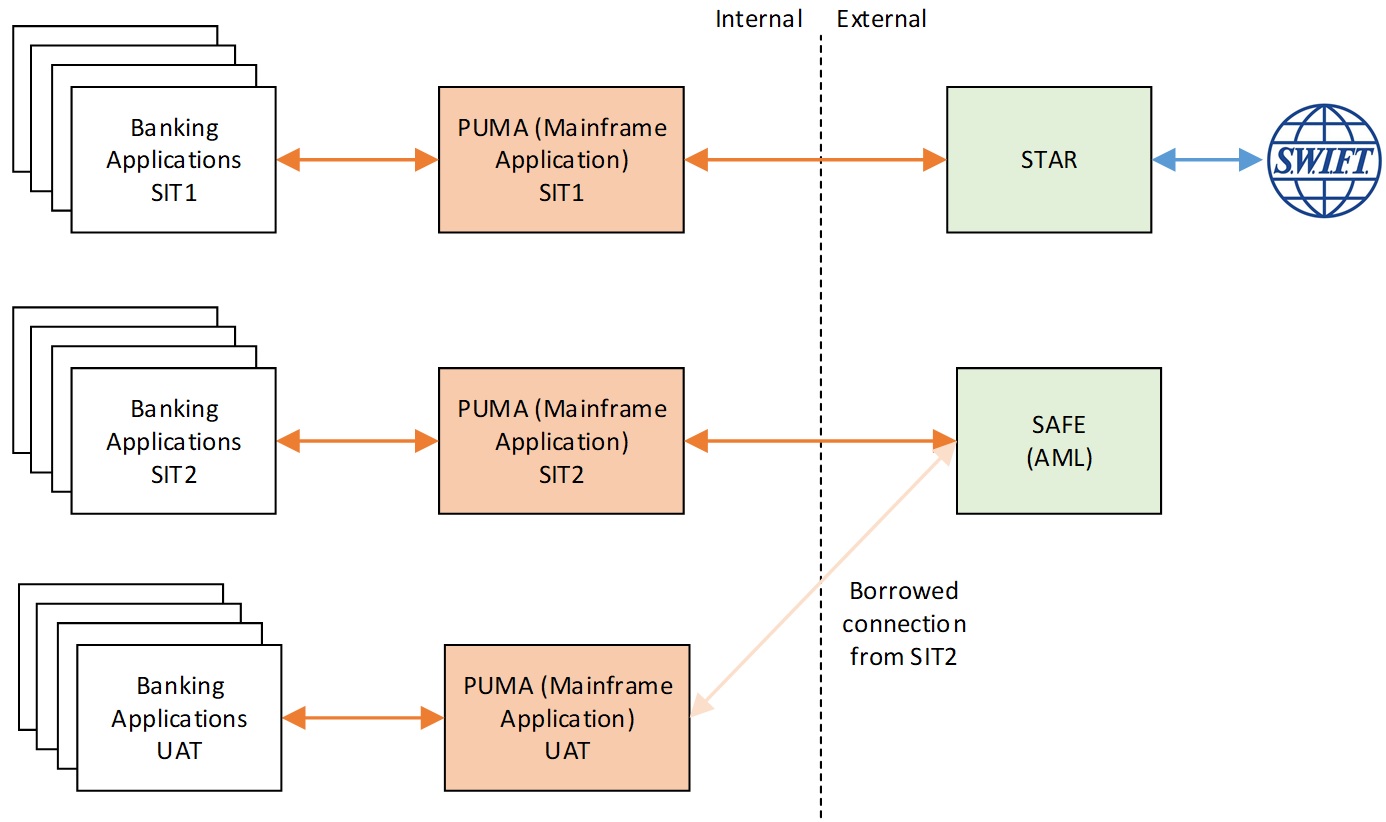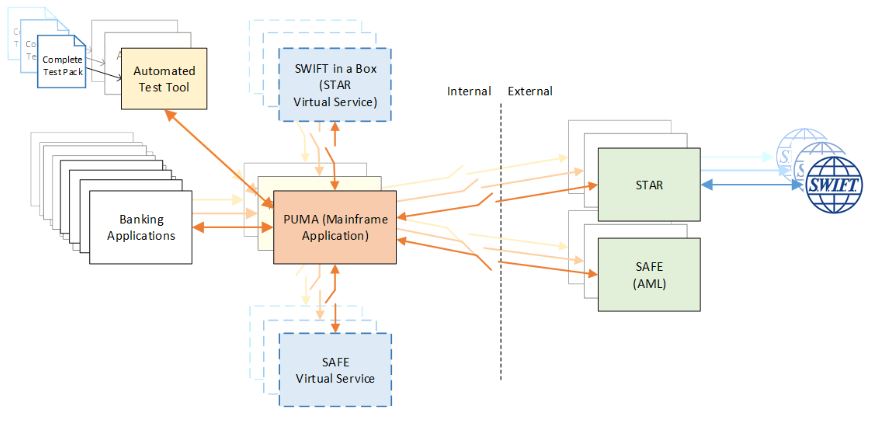| CONTENTS
Summary │ Delivering for Client │ Client Mainframe Implementation |
BackgroundOur client, a Tier 1 investment bank, was struggling to deliver change in its payments organisation. With year-long project delays due to manual processes and limitations in their legacy mainframe environment, they had serious concerns about their ability to compete efficiently in the ever shifting marketplace. |
Summary

Delivering for the Client
Business Challenge
The bank had a critical mainframe heritage application, responsible for anti-money laundering compliance, which was bottlenecking the whole programme of change due to manual processes and environment limitations. Every change in the large payment estate required sole access to two external dependencies, of which there was only one connection available each. External connectivity and test cycles were scheduled in advance, with delays of up to 16 months per project. This severely limited the bank’s ability to be competitive.
Technical Limitations
The client landscape was very complex with a huge legacy footprint and largely manual processes. This constrained the speed of change possible and the amount of automation which could be achieved.
- The payments routing application was built on mainframe over the course of 35 years, hence the team and approach was not attuned to test automation.
- The routing application testing function was entirely manual, so test cycles were slow and error prone, and not easily repeatable.
- There were three test environments, with only two external connections shared between them.
- Only one project could connect to one environment at any one time, so projects could not execute in parallel.
- Applications under test required a config change to move between environments, and could not connect to both external systems at the same time – which introduced additional risk.
The Solution
The Sandhata team delivered:
- Two new virtual services to simulate the two external systems, allowing applications to perform complete testing – free from the external dependencies
- Four additional connections, achieving end-to-end connectivity in all three test environments
- A complete automated test pack covering approx. 15,000 test scenarios, removing the need for manual green screen data entry
The result
Sandhata enabled the bank to accelerate their mainframe delivery and achieve business agility. The mainframe application can now align with the agile project deliveries on the newer systems – at a fraction of the cost of an application re-write. The cost of testing was greatly reduced, as the virtual services remove the need to use costly external connectivity and automation enables test cycles to be run in minutes rather than days or weeks. The mainframe application can now accommodate multiple projects testing simultaneously, allowing the business greater flexibility.
The team
Client Implementation – Illustrated
In the initial test environments, the client was facing several challenges. They only had one connection to the external STAR system in System Integration Testing (SIT) 1, only one connection to the external SAFE system in SIT2, while having no external connections in their User Acceptance Testing (UAT).
There were serious limitations in their testing capacity, as only one single project could use each environment at a time. This was due to the fact that the message traffic could not be segregated or routed.
The solution
Sandhata built and delivered a series of upgrades, designed to improve the flexibility of the application environments and dramatically speed up the testing process:
- A new “SWIFT in a Box” Virtual Service to simulate STAR
- A new Virtual Service to simulate SAFE
- A new connection to STAR and through to SWIFT network
- A new connection to SAFE
- Switches introduced on all connections, allowing routing and control of message traffic
- An automated testing tool introduced, configured with a complete test pack
The Outcomes
Thanks to these improvements, the client was now able to test with both SAFE and STAR in three separate, complete end-to-end test environments – and by introducing Virtual Services, the dependency on external systems were removed. The client was now able to save time and resource by executing automated tests using a complete test pack.
These upgrades also meant that the application was now completely aligned to the bank’s enterprise-wide test strategy.
Åsa Burke
Latest posts by Åsa Burke (see all)
- Sandhata in partnership with CA Technologies - 24th October 2017
- 5 steps to rapid DevOps success - 11th August 2017
- DevOps Myths – Debunked! - 22nd June 2017



